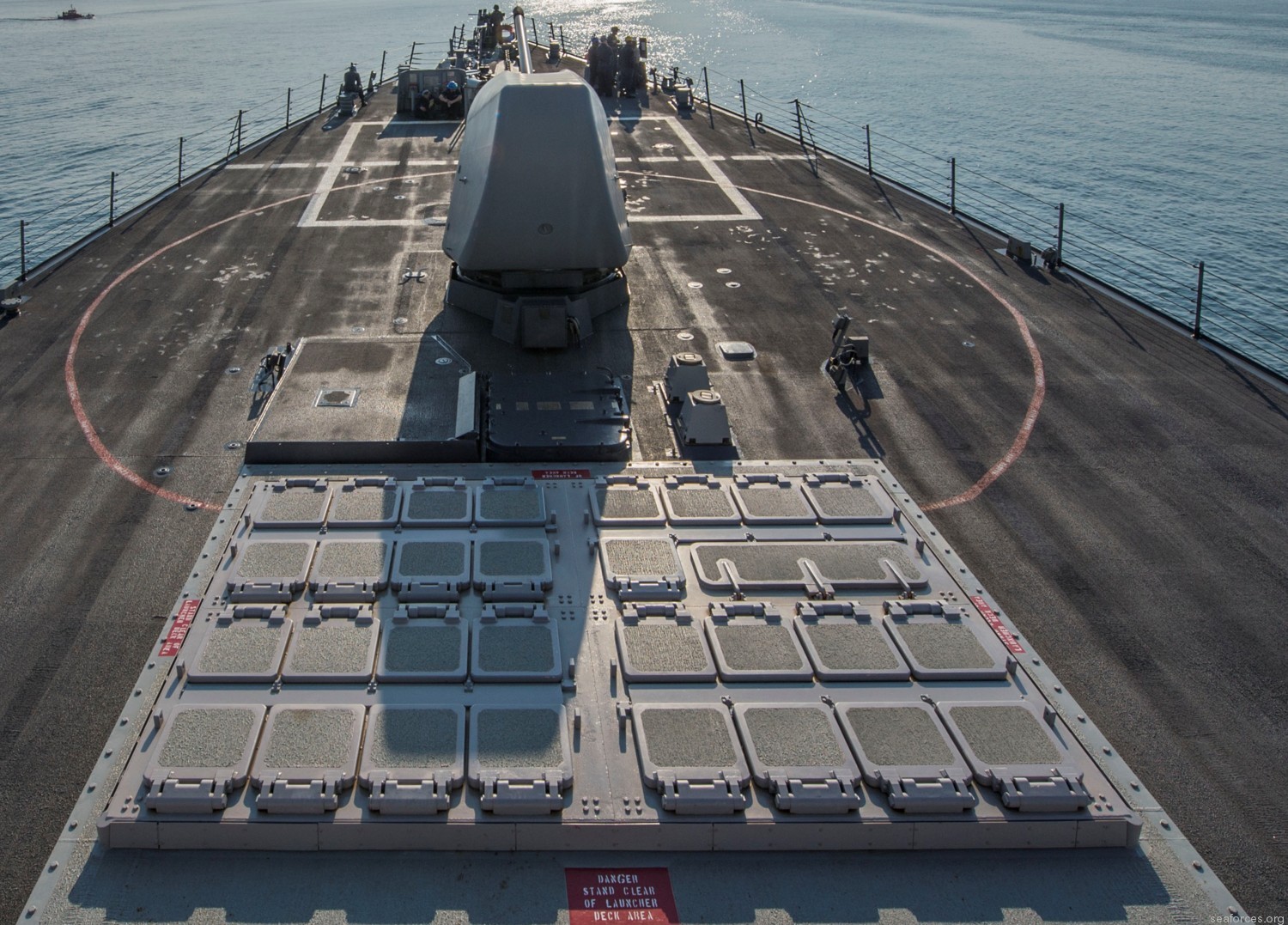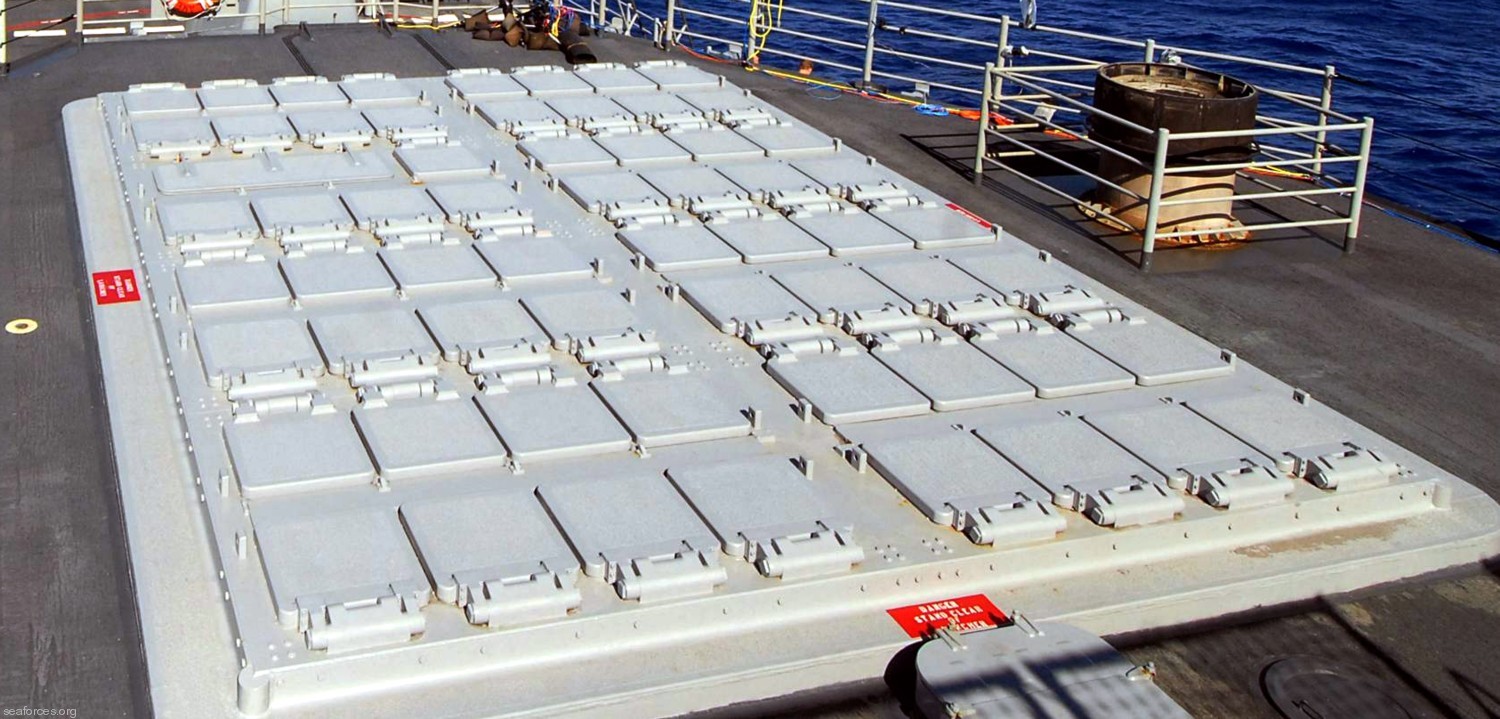Jura The idiot
General
there's a detail which I noticed but didn't understand: why a Tico cruiser mark 41 has in fact just 122 (2*61) cells?... Ticonderogas with 128 cells?
...
(yes, I used google now, even checked wiki

there's a detail which I noticed but didn't understand: why a Tico cruiser mark 41 has in fact just 122 (2*61) cells?... Ticonderogas with 128 cells?
...

there's a detail which I noticed but didn't understand: why a Tico cruiser mark 41 has in fact just 122 (2*61) cells?
(yes, I used google now, even checked wikibut didn't find the answer in the first page)

Old sources. Originally they have a loading crane that took up 3 cells.
But I believe those were eventually removed as they proved too ineffective. It just took too long to reload at sea, and required exceptionally calm sea state that it just wasn't practical often enough.
after a little bit longer google search:... why a Tico cruiser mark 41 has in fact just 122 (2*61) cells?
(yes, I used google now, even checked wikibut didn't find the answer in the first page)

"Originally, one module would consist of five cells and a collapsible crane for assisting with , but replenishment of large missiles at sea was later seen as impractical and dangerous, and modules with the cranes fell out of use."
:forward Mk-41 VLS aboard USS Laboon (DDG 58)

:aft Mk-41 VLS aboard USS Lake Erie (CG 70)

Quality of software isn't always dictated by decades of experience and numbers of iterations.
Sure, but you can apply the same critique to air defense operating experience. We act as if China only discovered radar yesterday.The "Software quality" here actually means the collection of several decades of air defense operating experience, implemented as software. Add to this the thousands of man years of radar/electronic warfare software work to enhance the capability of the US Aegis system throughout the decades. This is orthogonal to the question of what software technology/computing systems are used. I wouldn't be surprised if the Chinese score better on that front. However, let's not forget that new software is routinely buggy, and some bugs only crop up in real-world operating settings. Thus the importance of iterative refinement.
In general I agree to what you said and most of people here, I know it is right to say " armament is important, but sensors, combat management, subsystem integration, datalinking are all very important attributes for a modern surface combatant, and that's not including the issue of the quality of the armament as well."Nah man, armament is important, but sensors, combat management, subsystem integration, datalinking are all very important attributes for a modern surface combatant, and that's not including the issue of the quality of the armament as well. Measuring a warship only on the basis of weapons capacity is flawed.
The role of AShMs, while important in modern naval warfare, should not be excessively lionized, as the role of naval/carrier borne aviation for both offensive and defensive operations are very important as well for two sides if both have very capable AShMs.
that said, I agree that 055 is likely going to present quite a psychological shock to China's competitor navies.
Many of those navies are used to having a significant qualitative edge in terms of technology until recently with the introduction of newer warships like 052C/D and 054A, but before the emergence of 055 they could still feel comfortable knowing that their "capital" surface combatants were still larger and overall more capable than what the Chinese Navy had in its 052Ds.
However, with the 055s, which will likely be the world's largest in production surface combatant second to the Zumwalt class and likely the largest surface combatant of any westpac/asia pacific navy when it enters service, that previous sense of having a larger and more capable "capital" surface combatant will likely begin to be challenged. Furthermore, the 055 is not likely going to be built only in small numbers. There are four 055s in various stages of production before the first 055 is even launched and there are strong indications that we will see 055s in the double digits for merely the first batch/variant and to expect more 055s in a future improved variant as well, which considering the rate of construction of 055s that we can see and project, may not take too many years for a relatively large number to enter service.
Pair the likely-to-be-sizeable number of large and capable 055s with the large number of smaller but still quite advanced and capable 052C/Ds that have already been launched will enter service in coming years, and I think it is a combination of the size, capability, technological level, and number of the "capital" surface combatant 055s along with the number of "medium workhorse" surface combatant 052C/Ds, that will cause quite a paradigm shift in how the Chinese Navy will be perceived in the late 2010s/early 2020s compared to the Chinese Navy even as recent as the late 2000s.
These things are knowable if we have war games, or if we have full transparency on their weapons testing. However, even then having access to either sources of information is a long long stretch.In general I agree to what you said and most of people here, I know it is right to say " armament is important, but sensors, combat management, subsystem integration, datalinking are all very important attributes for a modern surface combatant, and that's not including the issue of the quality of the armament as well."
But, how can we know sensors, combat management , subsystem integration, datalink, quality if there was no war between China and US. I don't say China is superior or inferior.
What you said will be only known if there is a war.
To have a good information about spesification of modern weapon that we can see proved very difficult, to get decent information about combat mangement, datalink , quality are almost impossible.
In general I agree to what you said and most of people here, I know it is right to say " armament is important, but sensors, combat management, subsystem integration, datalinking are all very important attributes for a modern surface combatant, and that's not including the issue of the quality of the armament as well."
But, how can we know sensors, combat management , subsystem integration, datalink, quality if there was no war between China and US. I don't say China is superior or inferior.
What you said will be only known if there is a war.
To have a good information about spesification of modern weapon that we can see proved very difficult, to get decent information about combat mangement, datalink , quality are almost impossible.
